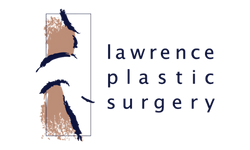Blepharoplasty & Other Eyelid Procedures
Blepharoplasty Overview
Removing excess skin from the upper or lower eyelids, removing the bags underneath the eyes, and tightening the skin can not only help you look better but see better, too. That’s why it remains one of our favorite procedures to perform on the face.
Your First Visit
At your initial consultation we will evaluate your face and eyes, review your photographs, and discuss ways we can achieve the look you want. We will review the procedure, showing photographs and diagrams on how it is performed, and come up with an operative plan that suits your needs.
Working with your Doctor
We ask that patients be seen by their optometrist or ophthalmologist for a routine check within 1 year or less prior to surgery to confirm there are no underlying problems with your eyes, such as glaucoma or other diseases. Of course, we will ask you about your overall health history and medications to make sure we can do the operation safely. If you have certain medical conditions we may need to contact your primary physician prior to surgery for medical clearance.
Upper Eyelids
The effects of aging may gradually cause the upper eyelids to droop. This is typically due to a combination of skin excess and gradual falling of the brow. In some cases the muscles that help hold the eyelid open may become gradually detached from their normal position, making it hard to keep the eyelid open.
Patients who experience minor to moderate amounts of skin excess may come to see us for cosmetic correction. As the process progresses, the excess tissue may actually obstruct the vision, and the repair of this becomes a functional operation to help restore the visual field.
Lower Eyelids
Unlike the upper lids, excess skin and bulging fat pads (bags) of the lower lid rarely cause a functional problem. However, they can give the entire face a “tired” look that patients find unattractive. Lower eyelid procedures may involve correction of the fad pads only through an internal incision (transconjunctival blepharoplasty), removal of excess skin and muscle only (pinch blepharoplasty), or correction of all elements (full blepharoplasty).
Other Eyelid Procedures
In addition to blepharoplasty, our most common eyelid procedure, we also have patients referred to us for other conditions of the eyelids requiring surgical correction.
Ectropion and Entropion Correction
These conditions usually involve an abnormal turning in or turning out of the lower lid, leading to eye problems.
Ptosis repair
Correction of abnormal function of the muscles which elevate the upper eyelid.
Chalazion
Treatment of a persistent “stye” or infection of the eyelids.
Eyelid growths and tumors
Both benign and cancerous lesions involve the eyelids.
Scars, Injuries
We can discuss are methods for repair of these conditions at the time of your consultation. However, most can be corrected in our office procedure room under local anesthesia. These procedure are typically covered by your insurance plan.
Cosmetic
Cosmetic blepharoplasty is one of our favorite procedures because it is a relatively low cost, low pain, short recovery procedure that makes you look much brighter and better without significantly changing your overall appearance. You look like yourself, but better. In addition we will discuss with you the importance of a good skin care regimen and arrange for a complimentary consultation with one of our aestheticians, our experts in skin care. You may also benefit from volume supplementation with injectable fillers or your own fat at the time of surgery or afterward if you lack fullness, particularly in the cheeks and lips. These procedures will help enhance your overall result of your blepharoplasty.
The Procedure
The procedure is often performed in our office under a local anesthetic. We can perform this operation in the operating room as well, either at the patient’s request or when we are doing other operative procedures. Anesthetic drops will be placed in your eyes and a small amount of local anesthetic will be injected into the eyelids. On the upper lids, the procedure is fairly straightforward, as the strip of excess tissue is excised and the incision closed with sutures. The entire procedure takes about an hour.
Recovery
Pain is generally mild after the procedure. We always give our patients pain medication after the procedure but most patients take only a few pills. Nearly all patients experience swelling or bruising after the surgery, which may take a few days to a few weeks to resolve. Sutures are removed in 5-7 days. Patients may return to normal activities shortly after the procedure but we advise you to refrain from strenuous activities for about a week. Makeup may be worn shortly after surgery to cover any bruising.
Fast Fact
Over 325,000 cosmetic blepharoplasty procedures were performed in 2020. Approximately 15% of these patients were men.
Financing & Payment Options
If there appears to be significant excess tissue in the upper eyelids which is obstructing your vision, we will refer you to your optometrist or ophthalmologist for visual field testing. This simple, painless test will give us the objective documentation we need for insurance coverage. We will submit this report along with your photographs and a letter describing your symptoms prior to the operation to see if you are eligible for coverage of this procedure. This predetermination process usually takes 2-4 weeks.
Patient Forms
Please fill out paperwork at least 24 hours before your scheduled appointment.
